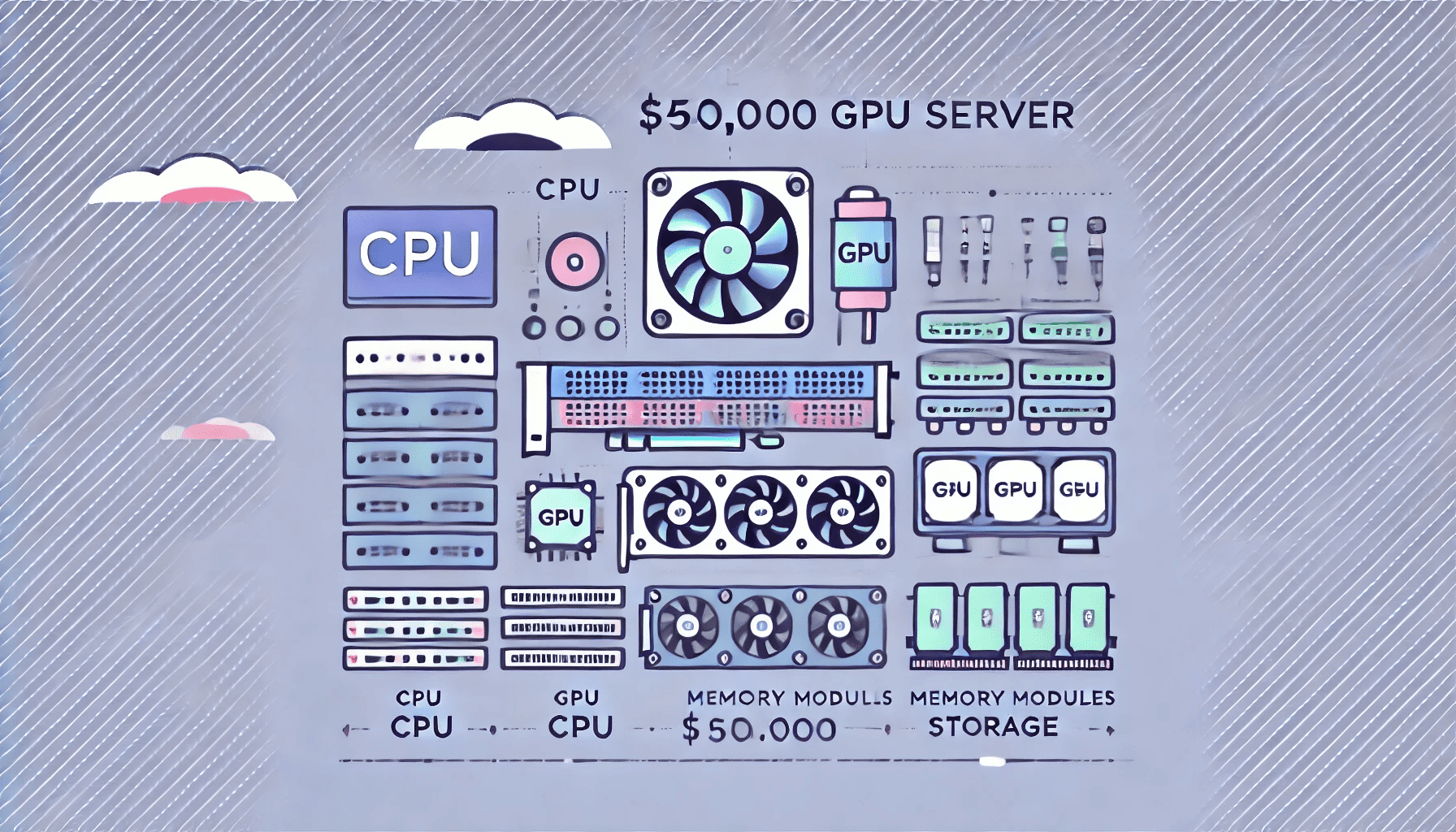Constructing a $50,000 GPU Server: A Detailed Guide
The main thing to consider when creating a server, regardless of cost, is balance. Keep in mind that our Server Simply team offers an impressive selection of custom servers, ideal for high-performance computing, machine learning, and data-intensive operations.
CPU Selection and Future Prospects
AMD EPYC Options
In any GPU-accelerated setup, the CPU plays a pivotal role as the orchestrator. Yes, the GPUs power through parallel processes, but the CPU manages I/O routes, concurrency, and scheduling. At Server Simply, we list multiple AMD EPYC 9000-series chips, including:
2 x AMD EPYC 9015 (8 cores, 3.60 GHz)at around 565.04 EUR each
2 x AMD EPYC 9654 (96 cores, 2.40 GHz)near 3985.51 EUR each
2 x AMD EPYC 9754 (128 cores, 2.25 GHz)roughly, 6590.75 EUR each
2 x AMD EPYC 9845 (160 cores, 2.10 GHz)hovering around 8929.65 EUR each
These are formidable options now, and by late 2025, fresh CPU generations might drive their prices down. If your workloads span HPC or AI, a balanced solution often falls between 16 and 32 cores per socket—enough compute muscle without exhausting your wallet.
Potential CPU Pick for a $50k Server
For HPC tasks or AI model training, 2 x AMD EPYC 9135 (16 cores, 3.65 GHz) at about 1,131.17 EUR each is an appealing blend of frequency and price. Alternatively, if threading is paramount, 2 x AMD EPYC 9334 (32 cores, 2.70 GHz) at around 2,392.81 EUR each might be the sturdier choice.
GPU Considerations and Late-2025 Outlook
AMD Instinct MI300X
At the stratospheric end, we list the AMD Instinct MI300X Platform (8x AMD Instinct MI300X 192GB HBM3 OAM Modules) well above 171,735.75 EUR. This exascale-level beast far exceeds a $50,000 cap, but is proof of how cutting-edge the GPU landscape has become.
For a sub-$50k configuration, you’ll likely select fewer GPUs or opt for something that, while potent, doesn’t devour your entire budget. By 2025, the market will bristle with GPU choices: next-gen AMD Instincts, NVIDIA’s H100 variants, or even Intel’s data center GPUs—all pitched at various price/performance tiers.
Viable Alternatives
1.AMD Instinct MI250:A step behind the MI300 family but still brawny enough for HPC demands.
2.NVIDIA A100/H100: Designed for HPC, but sometimes more wallet-friendly than flagship models if you catch them at the right moment.
3.Multiple Midrange GPUs:If your workflow can leverage parallelism, deploying several mid-tier accelerators may be the sweet spot.
Memory Configuration
ECC DDR5-4800
Memory can quietly inflate your bill, especially if you need to nourish ravenous GPUs. On our configurator, you’ll find offerings like:
24 x 64GB DDR5-4800 at ~330.18 EUR each
24 x 96GB DDR5-4800 at ~541.65 EUR each
High-end GPU environments often beg for at least 512 GB of system memory. You can scale up to 1.5 TB by deploying 64 GB DIMMs across 24 slots, but brace for a cost near 7,924 EUR. If your tasks won’t saturate every gigabyte, consider populating just 12 DIMMs to save some cash.
Expect widespread DDR5 adoption by year’s end, though top-capacity modules may remain at a premium. Sometimes, the hunger for performance justifies the cost.
Storage Factors
NVMe SSDs for Data-Intensive Tasks
Once GPUs get rolling, data ingestion must keep pace. We list an array of NVMe SSDs from 960 GB (~225 EUR) to 15.36 TB (~2,300+ EUR). For a project constrained by $50k, a pair of 1.92 TB PCIe 4.0 NVMe drives—configured in RAID or otherwise—often strikes an excellent balance. By 2025, PCIe 5.0 and possibly 6.0 will appear in flagship systems, though early adopters might still pay a premium.
Networking and Connectivity
Ethernet and InfiniBand
A single powerhouse server might chug along with 10Gb/s or 25Gb/s Ethernet. Yet if you’re building a multi-node HPC cluster, advanced adapters (such as 200Gb/s InfiniBand) might be indispensable. Expect to pay around 200 EUR for a basic 25Gb/s Ethernet card, while top-of-the-line InfiniBand can venture beyond 1,700 EUR. For scaled HPC realms, this investment can be invaluable; for a lone deep learning rig, moderate networking is usually enough.
Support and Warranty
Managing Risk and Downtime
Enterprise-level warranties can significantly inflate total costs. Our 3-year standard coverage hovers near 4,228.90 EUR. That can rise beyond 7,400 EUR for express service or specialized add-ons (like no-drive-return perks). In a critical production environment, such coverage could be priceless. But if you’re tinkering in a development lab, standard coverage might suffice, leaving more breathing room for hardware upgrades.
Example Configuration for $50,000
Below is a hypothetical outline:
2 x AMD EPYC 9135:~2,262.34 EUR total
24 x 64GB DDR5-4800:~7,924.32 EUR
2 x 1.92 TB NVMe SSD PCIe 4.0:~602.78 EUR
One Intel Dual 25Gb/s Network Card:~240–260 EUR
Dual 3000W Titanium PSUs:~908.84 EUR
3-Year Standard Warranty:~4,228.90 EUR
Before any GPUs, this rig already reaches around 16,167 EUR. Once you factor in a mid-tier or older-gen GPU solution—easily in the $10,000–$20,000 zone—you’ll find yourself hovering near that $50k mark.
Conclusion
When designing a $50,000 GPU server, remember the equilibrium between CPU throughput, GPU performance, ample memory, and rapid storage—since any bottleneck can hinder your entire operation. Choose a warranty tier that aligns with how critical uptime is for your projects, and don’t forget to factor in total cost of ownership. With meticulous planning, you’ll fashion a robust, future-proof GPU server that can devour sprawling datasets, train sophisticated AI models, and empower top-tier research for years on end.


